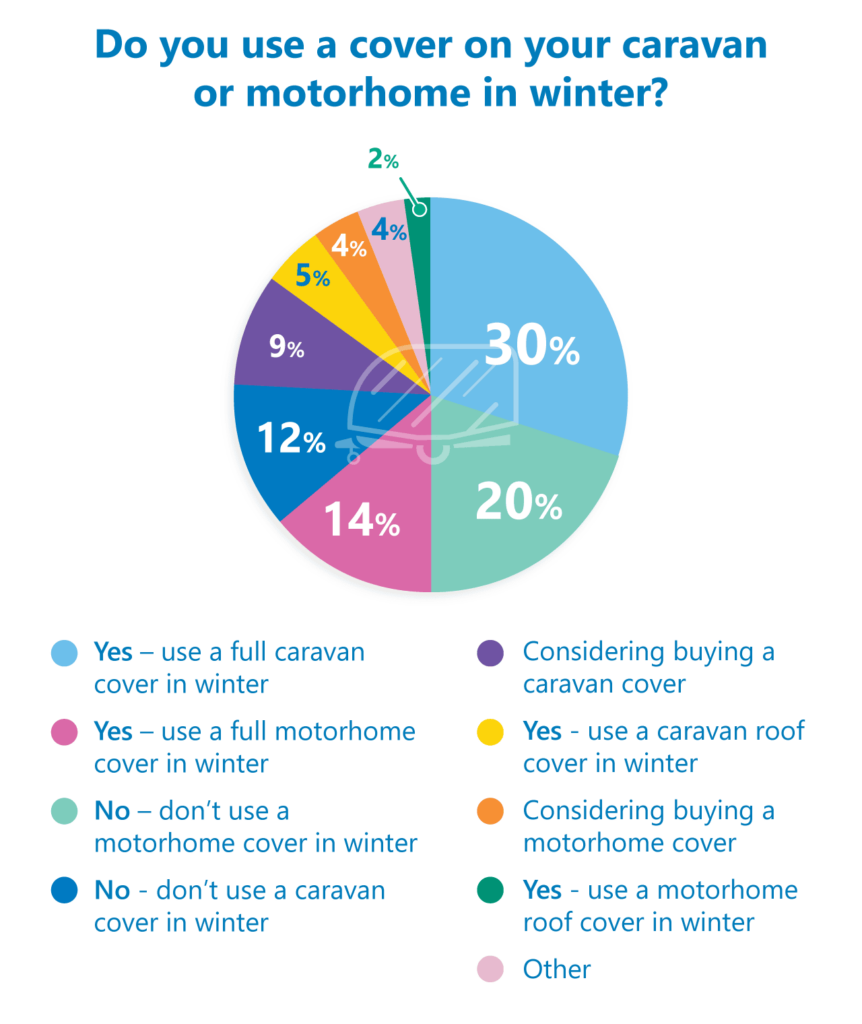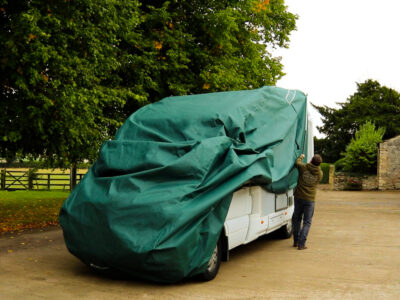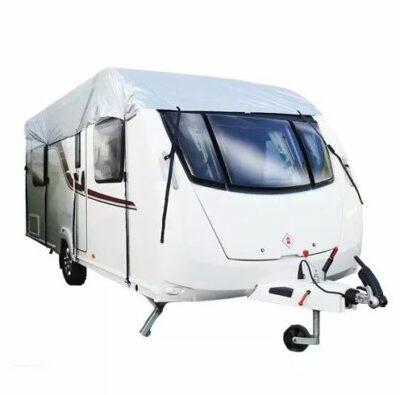As winter approaches and temperatures drop, caravan and motorhome enthusiasts are gearing up to protect their leisure vehicles from the elements.
Last month we ran a community poll to see how popular the use of covers was with caravanners and motorhomers during the autumn and winter months. With more than 1,100 owners casting their vote, the results revealed a split of attitudes towards the use of caravan and motorhome covers. Let’s take a look at the results…
Full caravan covers
Almost a third (30 percent) of respondents said they used a full caravan cover during the winter months – more than half of the caravanning votes. These covers act as a robust shield against snow, ice, hailstones, tree sap, storm debris, and more.

On the flip side, 12 percent chose not to use a caravan cover, while nine percent are considering buying one, possibly recognising the benefits of protecting their investment.

Full motorhome covers
Motorhome owners displayed a slightly lower inclination towards using a full cover, with just 14 percent choosing to shield their vehicles during winter – over a third of the motorhoming votes.

On the contrary, 20 percent of voters chose not to use a motorhome cover – almost half of the motorhoming votes. A small four percent of voters are contemplating buying a cover, again, perhaps recognising the advantages of protecting their motorhomes from the elements.
Roof covers for caravans and motorhomes
A smaller percentage of respondents, 10 percent of caravanners (five percent overall) and five percent of motorhomers (two percent overall), told us they use roof covers during winter. Roof covers provide targeted protection against bird lime, tree sap, rainwater grime and hailstone damage in particular, and are much easier to fit than a full cover.

No cover
Despite the benefits of caravan and motorhome covers in the harsher months, a good proportion of respondents, 20 percent for motorhomes and 12 percent for caravans, opted not to use covers during the autumn and winter. This could be down to cost, storage conditions, or the challenge of fitting and storing a cover when it’s not in use.
A small four percent fell into the “other” category.
Your cover comments
Val Robertson told us she had just bought a motorhome roof cover.
“We didn’t want a full cover as they are so expensive, plus all the hassle of putting them on and off when we need to take the motorhome for a run every so often,” she said.
Phil Fairchild also has a cover which goes over the roof, the back and the bonnet of his motorhome.
“I also have a full cover but haven’t even opened it as this larger one does the trick,” he said. “Can easily get in and out of the van to check all is well. Even the solar panel gets enough sun and light to keep batteries charged up.”
Jean Stafford has a folding camper and uses a cover to protect it from rain damage.
Barry Smith said he used to leave his towing cover on during storage but found that dust accumulated and created difficult-to-remove marks and leaving it on meant that the winter sunshine couldn’t provide warmth into the van.
Joan Duffin said she hoped a cover would help to stop any ingress of heavy rain.
As winter settles in and if you’re considering buying a caravan or motorhome cover see our new guide to caravan covers and our updated guide to motorhome covers.
Thanks to everyone who voted and commented.
Caravan and motorhome covers not only shield against the elements but also deter unwanted guests, such as vermin and insects, and provide an added layer of security against theft.


In the last gale (50mph) a caravan near me had the zips undone and the cover was banging away in the wind. Looks like the Maypole picture you have in cover article. Being neighbourly we zipped it up again as owners live some distance away. Fabric was torn down the side of one zip.
Suggest people find a way of securing zips so they can not come undone.
MOST USEFUL COMMENTS, THANKS
We ran into a problem recently as we didn’t realise that putting our campervan cover on and off had damaged the fixed solar panel on the roof.